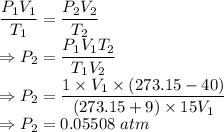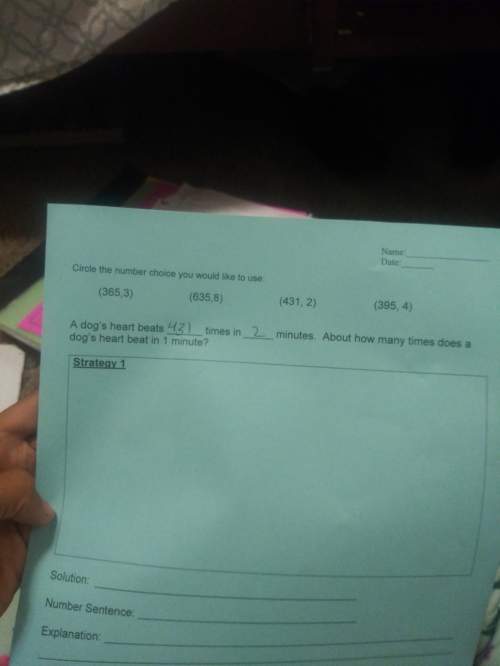
Physics, 19.12.2019 19:31 Isaiahgardiner5143
Large helium–filled balloons are used to lift scientific equipment to high altitudes. what is the pressure inside such a balloon if it starts out at sea level with a temperature of 9.0°c and rises to an altitude where its volume is fifteen times the original volume and its temperature is -40.0°c. what is the gauge pressure in atm)

Answers: 2


Another question on Physics

Physics, 21.06.2019 23:00
Acoal-fired plant generates 600 mw of electric power. the plant uses 4.8 x 10^6 kg of coal each day, and the heat of combustion of coal is 3.3x 10^7 j/kg. the steam that drives the turbines is at a temperature of 300° c, and the exhaust water is at 37° c. (a) what is the overall efficiency of the plant for generating electric power? (b) how much thermal energy is exhausted each day? (c) what is the change in entropy of the universe for this heat engine? (d) using the same heat reservoirs, what is the maximum possible (carnot) efficiency for a heat engine?
Answers: 1

Physics, 22.06.2019 15:10
An important dimensionless parameter concerned with very high-speed flow is the mach number, defined as v/c, where v is the speed of the object such as an airplane or projectile, and c is the speed of sound in the fluid surrounding the object. for a projectile traveling at 1170 mph through air at 50 ˚f and standard atmospheric pressure, what is the value of the mach number?
Answers: 2

Physics, 22.06.2019 17:00
In the future, people will only enjoy one sport: electrodisc. in this sport, you gain points when you cause metallic discs hovering on a field to exchange charge. you are an electrodisc player playing the popular four disc variant. the disks have charges of qa = −8.0 µc, qb = −2.0 µc, qc = +5.0 µc, and qd = +12.0 µc. (1) you bring two disks together and then separate them. you measure the resulting charge of these two disks and find that it is +5.0 µc per disk. which two disks did you bring together? (a) a and b (b) a and c (c)a and d (d)b and c(e) b and d (f) c and d. (2) you bring three disks together and then separate them. you measure the resulting charge of these three disks and find that it is +3.0 µc per disk. which three disks did you bring together? a, b, and c (a) a, b, and d (c) a, c, and d (d) b, c, and d. (3) given the resulting charge of each disk measured in (b) is +3.0 µc, how many electrons would you need to add to a disk of this charge to electrically neutralize it? electrons
Answers: 3

You know the right answer?
Large helium–filled balloons are used to lift scientific equipment to high altitudes. what is the pr...
Questions



Social Studies, 09.01.2020 10:31

Mathematics, 09.01.2020 10:31




Chemistry, 09.01.2020 10:31


Mathematics, 09.01.2020 10:31


Mathematics, 09.01.2020 10:31

Biology, 09.01.2020 10:31

History, 09.01.2020 10:31


English, 09.01.2020 10:31

Arts, 09.01.2020 10:31


History, 09.01.2020 10:31

 = Initial pressure = 1 atm
= Initial pressure = 1 atm = Initial volume
= Initial volume = Inital temperature = 9°C
= Inital temperature = 9°C = Final pressure
= Final pressure = Final volume =
= Final volume = 





